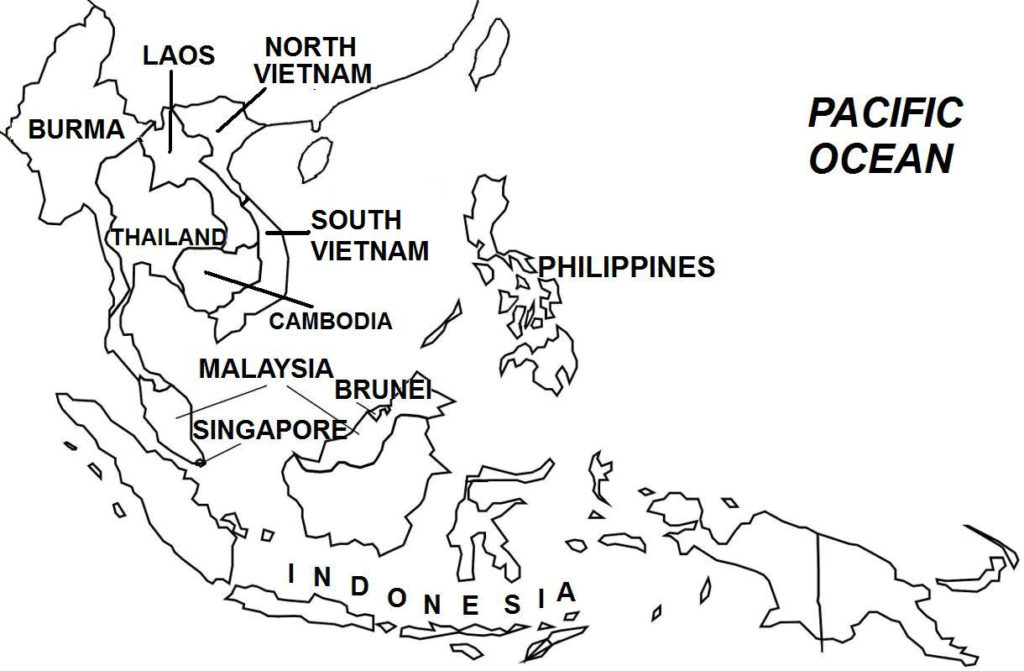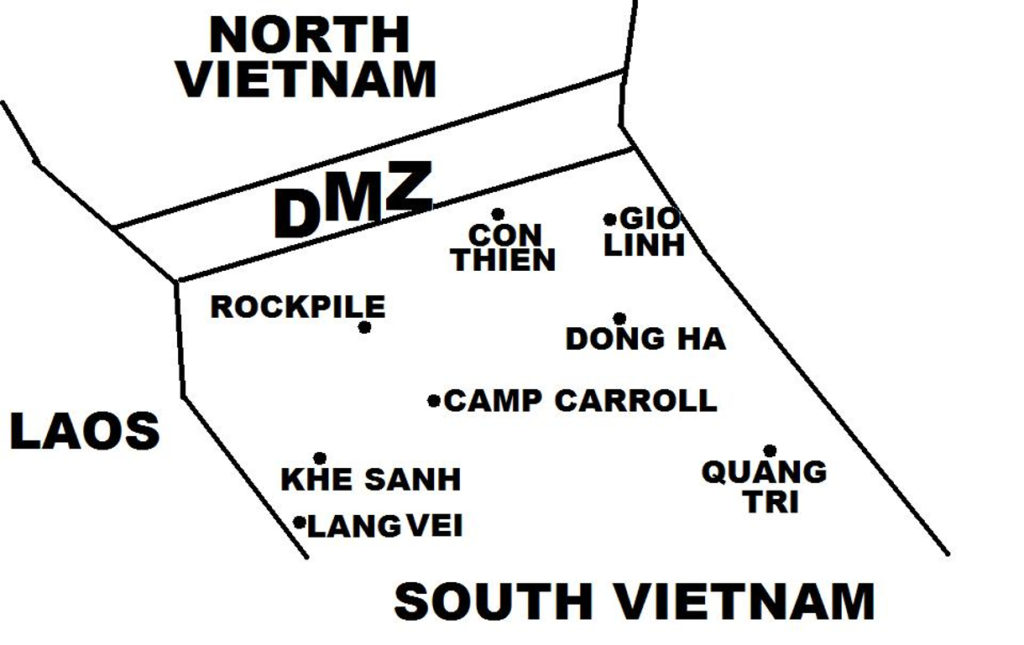(Excerpts taken from Vietnam War – Wars of the 20th Century – Twenty Wars in Asia)

In June 1966, North Vietnamese forces attacked across the Demilitarized Zone (DMZ), but were repulsed by U.S. Marines, supported by South Vietnamese units and American air, artillery, and naval forces. U.S. forces then launched Operation Hastings, leading to three weeks of large battles near Dong Ha and ending with the North Vietnamese withdrawing back across the DMZ. The year 1966 also saw the United States greatly escalating the war, with U.S. deployment being increased over two-fold from the year before, from 184,000 in 1965 to 385,000 troops in 1966. In 1967, U.S. deployment would top 485,000 and then peak in 1968 with 536,000 soldiers.

Throughout 1967, combat activity in the DMZ consisted of artillery duels, North Vietnamese infiltrations, and firefights along the border. As the North Vietnamese actually used their side of the DMZ as a base to stage their infiltration attacks, in May 1967, the U.S. Marines militarized the southern side of the DMZ, which sparked increased fighting inside the DMZ. Also starting in September 1967 and continuing for many months, North Vietnamese artillery batteries pounded U.S Marine positions near the DMZ, which inflicted heavy casualties on American troops. In response, U.S. aircraft launched bombing attacks on North Vietnamese positions across the DMZ.
Aftermath of the Vietnam War The war had a profound, long-lasting effect on the United States. Americans were bitterly divided by it, and others became disillusioned with the government. War cost, which totaled some $150 billion ($1 trillion in 2015 value), placed a severe strain on the U.S. economy, leading to budget deficits, a weak dollar, higher inflation, and by the 1970s, an economic recession. Also toward the end of the war, American soldiers in Vietnam suffered from low morale and discipline, compounded by racial and social tensions resulting from the civil rights movement in the United States during the late 1960s and also because of widespread recreational drug use among the troops. During 1969-1972 particularly and during the period of American de-escalation and phased troop withdrawal from Vietnam, U.S. soldiers became increasingly unwilling to go to battle, which resulted in the phenomenon known as “fragging”, where soldiers, often using a fragmentation grenade, killed their officers whom they thought were overly zealous and eager for combat action.
Furthermore, some U.S. soldiers returning from Vietnam were met with hostility, mainly because the war had become extremely unpopular in the United States, and as a result of news coverage of massacres and atrocities committed by American units on Vietnamese civilians. A period of healing and reconciliation eventually occurred, and in 1982, the Vietnam Veterans Memorial was built, a national monument in Washington, D.C. that lists the names of servicemen who were killed or missing in the war.
Following the war, in Vietnam and Indochina, turmoil and conflict continued to be widespread. After South Vietnam’s collapse, the Viet Cong/NLF’s PRG was installed as the caretaker government. But as Hanoi de facto held full political and military control, on July 2, 1976, North Vietnam annexed South Vietnam, and the unified state was called the Socialist Republic of Vietnam.
Some 1-2 million South Vietnamese, largely consisting of former government officials, military officers, businessmen, religious leaders, and other “counter-revolutionaries”, were sent to re-education camps, which were labor camps, where inmates did various kinds of work ranging from dangerous land mine field clearing, to less perilous construction and agricultural labor, and lived under dire conditions of starvation diets and a high incidence of deaths and diseases.
In the years after the war, the Indochina refugee crisis developed, where some three million people, consisting mostly of those targeted by government repression, left their homelands in Vietnam, Cambodia, and Laos, for permanent settlement in other countries. In Vietnam, some 1-2 million departing refugees used small, decrepit boats to embark on perilous journeys to other Southeast Asian nations. Some 200,000-400,000 of these “boat people” perished at sea, while survivors who eventually reached Malaysia, Indonesia, Philippines, Thailand, and other destinations were sometimes met there with hostility. But with United Nations support, refugee camps were established in these Southeast Asian countries to house and process the refugees. Ultimately, some 2,500,000 refugees were resettled, mostly in North America and Europe.
The communist revolutions triumphed in Indochina: in April 1975 in Vietnam and Cambodia, and in December 1975 in Laos. Because the United States used massive air firepower in the conflicts, North Vietnam, eastern Laos, and eastern Cambodia were heavily bombed. U.S. planes dropped nearly 8 million tons of bombs (twice the amount the United States dropped in World War II), and Indochina became the most heavily bombed area in history. Some 30% of the 270 million so-called cluster bombs dropped did not explode, and since the end of the war, they continue to pose a grave danger to the local population, particularly in the countryside. Unexploded ordnance (UXO) has killed some 50,000 people in Laos alone, and hundreds more in Indochina are killed or maimed each year.
The aerial spraying operations of the U.S. military, carried out using several types of herbicides but most commonly with Agent Orange (which contained the highly toxic chemical, dioxin), have had a direct impact on Vietnam. Some 400,000 were directly killed or maimed, and in the following years, a segment of the population that were exposed to the chemicals suffer from a variety of health problems, including cancers, birth defects, genetic and mental diseases, etc.
Some 20 million gallons of herbicides were sprayed on 20,000 km2 of forests, or 20% of Vietnam’s total forested area, which destroyed trees, hastened erosion, and upset the ecological balance, food chain, and other environmental parameters.
Following the Vietnam War, Indochina continued to experience severe turmoil. In December 1978, after a period of border battles and cross-border raids, Vietnam launched a full-scale invasion of Cambodia (then known as Kampuchea) and within two weeks, overwhelmed the country and overthrew the communist Pol Pot regime. Then in February 1979, in reprisal for Vietnam’s invasion of its Kampuchean ally, China launched a large-scale offensive into the northern regions of Vietnam, but after one month of bitter fighting, the Chinese forces withdrew. Regional instability would persist into the 1990s.
